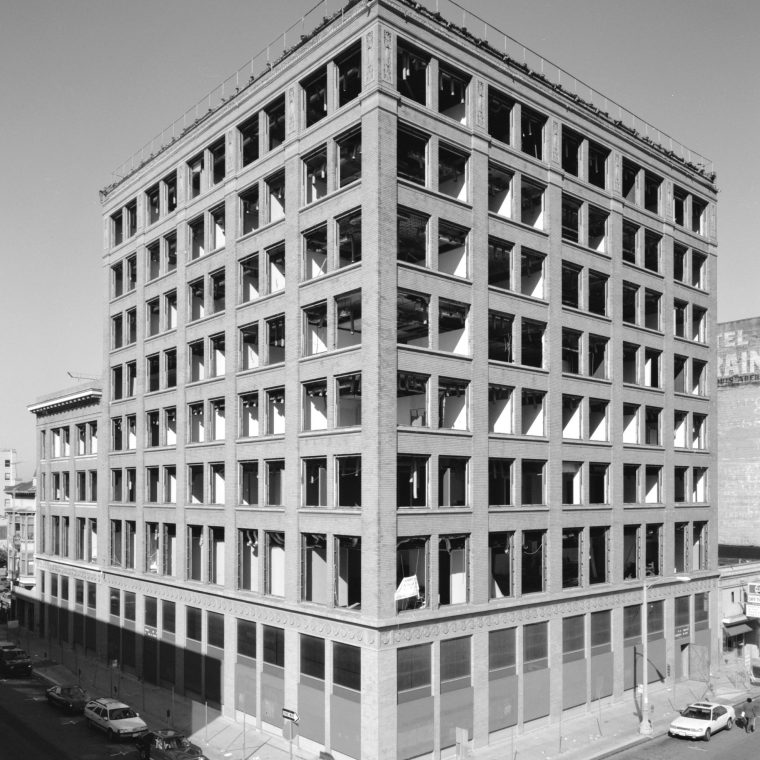You’ve got to draw a line somewhere, and in my opinion, an eight-story building constructed in the US in 1917 is not and never was a skyscraper. I have complaints about the beginning of the HABS summary description:
The John Breuner and Company building is an excellent surviving example of early skyscraper design dating from a period when Oakland’s downtown experienced a dramatic transformation subsequent to the 1906 earthquake. The building contributes to a largely intact and architecturally unified downtown district representative of a significant period in the development of Oakland’s downtown between 1907 and 1929.
This is not an early skyscraper design. Skyscrapers had been around (depending on your definition) more than 30 or 40 years by 1917. The structure needed for them was well defined by then and a handful of architectural styles had started to dominate. The same architect, Walter Matthews, had designed Oakland’s Union Savings Bank (below) in 1904, three stories higher and 13 years earlier.

I also question whether a building constructed eleven years after the earthquake is really related to the 1906 quake. It was certainly related to the economic boom in the area, but the quake?
Rather than trying to claim that the Breuner building is a skyscraper – one of fourteen buildings with tag in the HABS collection! – it’s a lot more interesting to look at its facade in the context of the time. There had been a large cornice, which was damaged by the Loma Prieta earthquake in 1989 and was removed before this 1991 photo, but other than that, there was very little ornament. There’s a band of terra cotta above the first floor, slightly projecting window sills, and some more terra cotta th the eight floor piers, but that’s about it. Compared to the Union Bank, this is a very plain design, and generally I expect department stores to have more flamboyant architecture than banks. The large windows and the plain brick make the facade into an echo of the steel frame it’s hiding – as close to structural honesty as I expect a building to get – and is very much in the spirit of Chicago skyscrapers of the era. The Union Bank, on the other hand, is a much more New-York-style building.
One thing to ponder: the missing cornice at the Bruener building would really change the visual impression it gives. Modern facade materials, windows, roofing, and flashing pretty much eliminated the need for cornices as water-shedding elements; changes in architectural style would eliminate the need for them as aesthetic elements. From our perspective more than a century later, the building looks fine without the cornice, maybe even better since the bare top better fits the modern style that at the time was still being developed.
The Bruener building was demolished in 1992 or 1993.




You must be logged in to post a comment.